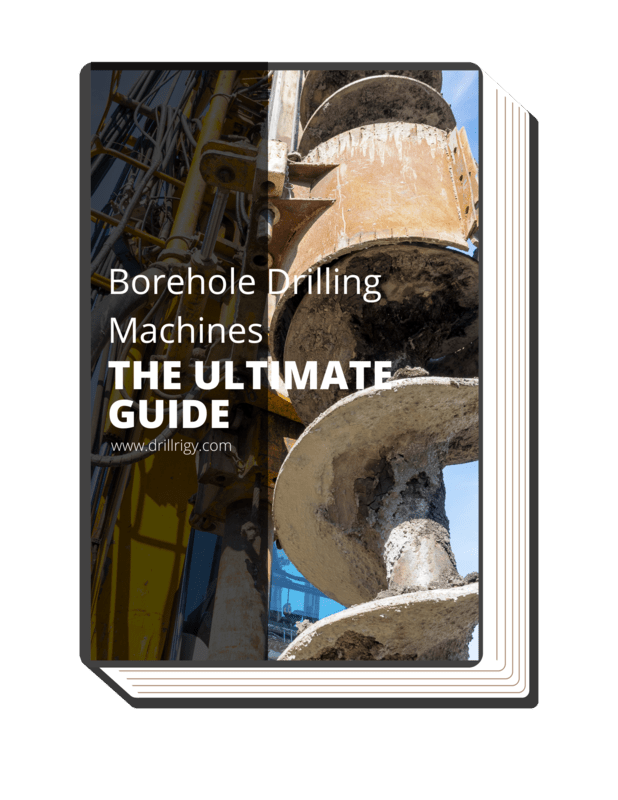Have you ever found yourself caught in the debate of percussion drilling vs rotary drilling, wondering which technique best serves your unique needs?
With extensive industry experience and a deep understanding of drilling techniques, we’re here to offer invaluable insights. Our comprehensive guide is tailored to assist professionals like you make informed decisions.
When it comes to percussion drilling vs rotary drilling, each technique offers distinct advantages and challenges. Our objective analysis provides clarity on their differences, assisting you in selecting the most suitable approach for your projects.
In the following sections, we will meticulously unpack the pros and cons associated with each drilling method, diving deep into their applications, efficiency, and overall performance.
Read on to discover comprehensive tips and advice that will significantly influence your drilling practices for the better.
1. The Fundamentals of Drilling
Understanding the fundamental aspects of drilling is crucial for anyone involved in the field, whether in water well drilling, construction, or mining. Below, we’ve outlined the core principles and basics one must grasp to navigate through the intricacies of drilling operations efficiently.
- Mechanical Process: Drilling is essentially a mechanical process where a hole is created by eliminating material from a workpiece. This process is conducted using a drill bit that is fixed to a drilling machine, which applies force and rotates the bit to cut into the material.
- Cutting Mechanism: The fundamental principle of drilling involves a cutting or grinding mechanism where the drill bit exerts force onto the surface, resulting in the removal of material in a cylindrical manner. This generates a hole whose depth and diameter depend on the specifications of the drill bit and the operational parameters set for the drilling machine.
- Cooling and Lubrication: During drilling, significant heat is generated due to the friction between the drill bit and the work material. It is crucial to manage this heat effectively to prevent damage to both the workpiece and the drill bit. This is usually achieved by using cutting fluids that serve as coolants and lubricants, reducing the temperature and decreasing friction during operation.
- Chip Removal: As the drill bit penetrates the work material, it creates chips or cuttings that must be effectively removed from the hole. Efficient chip removal is crucial for maintaining the integrity of the hole being drilled and preventing damage to the drill bit and the workpiece.
These fundamental principles of drilling provide a baseline understanding of the process, serving as a foundation for individuals engaged in or learning about drilling operations. Understanding these principles is essential for effectively planning, executing, and managing drilling projects across various industries.
2. Understanding Percussion Drilling
Percussion drilling is a time-tested technique used extensively in various sectors. Below, we’ll explore its fundamental aspects, applications, and the benefits and drawbacks associated with its use.
What is Percussion Drilling?
According to Science Direct, percussion drilling is a method where a heavy drill bit is repeatedly lifted and dropped, impacting the ground with considerable force. This repetitive striking action fractures and disintegrates the substrate, enabling the removal of debris and progression of the borehole. The technique is often preferred for drilling in hard rock and other resistant materials due to its effective breaking mechanism.
This technique is ancient but still relevant and effective for specific applications. With its straightforward mechanism and robust performance, percussion drilling is often chosen for projects where simplicity and durability are paramount, especially in remote or challenging locations.
Mechanics of Percussion Drilling
Delving into the mechanics of percussion drilling provides valuable insights into its operational nuances and capabilities. Here, we will dissect the working principles of different percussion drilling types to offer a clear perspective on how each functions and serves various drilling needs.
Cable Tool Drilling
Cable tool drilling, a type of percussion drilling, is characterized by its simplicity and effectiveness in penetrating tough geological formations. The technique utilizes a cable to suspend and drop a heavy drilling bit, effectively breaking through the substrate. The generated debris is then removed, allowing for further progression into the earth.
This form of percussion drilling is often favored for its low operational cost and minimal requirement for advanced technology. While it may be slower than some contemporary drilling methods, its reliability and low-tech appeal make it a practical choice for various applications, especially in areas with limited resources.
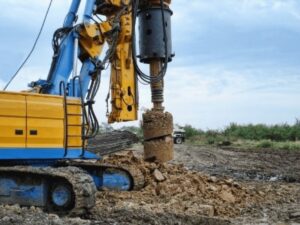
Hydraulic Drilling
Hydraulic percussion drilling leverages the power of hydraulics to lift and drop the drill bit. The hydraulic system offers more control over the drilling process, resulting in efficient and precise borehole creation. This variant of percussion drilling is typically used for more complex or precise drilling operations where greater control is necessary.
In terms of speed and efficiency, hydraulic percussion drilling often surpasses cable tool drilling. Its application is widespread in construction and mining where the substrate is not only hard but also requires meticulous handling to preserve the integrity of the surrounding structures and environments.
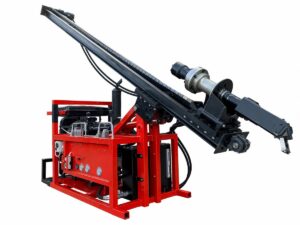
Air Drilling
Air percussion drilling utilizes compressed air to drive the drilling mechanism. The high-pressure air facilitates rapid and powerful strikes, making it an excellent choice for drilling through hard and compact materials efficiently. This method is particularly useful for deep drilling projects where the removal of debris is crucial.
With its ability to provide continuous and powerful percussion actions, air drilling is ideal for projects requiring deep boreholes. It is often employed in water well drilling and mineral exploration due to its ability to handle significant depths and various geological formations effectively.
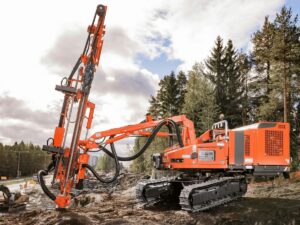
Common Applications
Percussion drilling is versatile, catering to various industry needs. Here are specific applications where it truly shines:
- Water Well Drilling: Percussion drilling is commonly used in areas with hard rock formations to access underground water reservoirs effectively. Its powerful impact mechanism makes it ideal for penetrating these tough layers.
- Mineral Exploration: For initial exploration phases where samples are retrieved from considerable depths, percussion drilling offers a reliable and efficient solution.
- Foundation Laying in Construction: In construction projects requiring deep foundations, percussion drilling is often employed due to its ability to bore through hard materials and create stable, deep holes for foundation laying.
- Geotechnical Investigations: Percussion drilling is also used in geotechnical investigations where engineers need to understand the properties of the earth beneath the surface.
Understanding the array of applications that percussion drilling can serve provides clarity on its versatility and efficacy in the field. With this insight, companies can better align their drilling strategies with the project requirements and geological considerations at hand.
Pros and Cons
Understanding the advantages and drawbacks of percussion drilling is essential for making informed operational decisions. Below, we elucidate the significant pros and cons of utilizing percussion drilling in your projects.
Pros
- Effective in hard and rocky terrains.
- Simple and straightforward mechanism.
- Low technology requirements make it accessible and easy to maintain.
- Reliable performance in various geological settings.
Cons
- Generally slower compared to rotary drilling methods.
- Limited depth compared to other drilling techniques.
- Might not be the most efficient choice for all types of substrates.
Through understanding the mechanics, applications, and pros and cons of percussion drilling, professionals can make informed decisions about its appropriateness for their specific project needs.
3. Understanding Rotary Drilling
Rotary drilling is a widely adopted technique in various industries for its efficiency and precision. Below, we will delve into its fundamental aspects, applications, as well as the benefits and drawbacks associated with its use.
What is Rotary Drilling?
Rotary drilling is a method wherein a drill bit is rotated to bore holes into the earth’s subsurface. This technique is recognized for its ability to create deep and wide boreholes efficiently, making it ideal for exploring and extracting natural resources like oil and gas, or for constructing wells. The rotary action grinds away the substrate, creating a hole while maintaining the integrity of the bore walls.
According to Borehole Solutions, this drilling method is often chosen for its speed and versatility, being capable of penetrating various geological formations, from soft soils to hard rocks. Its widespread use in multiple industries testifies to its reliability and effectiveness in handling diverse drilling needs.
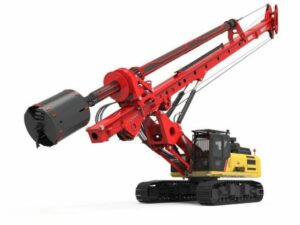
Mechanics of Rotary Drilling
Understanding the intricacies and operational mechanics of rotary drilling is crucial for its effective application in the field. In this section, we will explore the fundamental mechanisms of various rotary drilling techniques, shedding light on how each contributes to the drilling process’s overall efficiency and precision.
Tricone Bit Drilling
Tricone bit drilling employs a bit with three rotating cones, each designed to grind away the earth as it spins. This form is particularly effective for drilling through hard rock formations due to the continuous grinding action, which helps in achieving precise borehole dimensions and smoother walls.
Tricone bits are renowned for their durability and efficiency in different geological settings. The type of tricone bit selected—whether sealed bearing or open bearing, milled tooth or insert tooth—will influence the drilling speed and the longevity of the bit in various substrates.
Diamond Core Drilling
Diamond core drilling uses a diamond-encrusted drill bit to cut through the substrate. This technique offers incredibly high precision and is often used for exploration purposes where obtaining an undisturbed sample is crucial. Diamonds, being the hardest known material, can efficiently cut through any geological formation.
The use of diamonds ensures that the drill bits have extended life and unparalleled cutting ability. Though diamond core drilling might be more expensive than other methods, the precision and quality of samples obtained make it indispensable in exploratory projects.
Down-the-Hole Drilling
Down-the-hole (DTH) drilling utilizes a hammer located at the drill bit’s bottom, providing a powerful percussive force while the bit rotates. This combination of percussion and rotation allows for efficient drilling in hard, abrasive, or fractured geological formations.
DTH drilling is often selected for deep hole drilling applications due to its ability to maintain hole straightness while providing a high penetration rate. This technique is valuable in mining, water well drilling, and construction projects requiring secure and accurate boreholes.
Common Applications
Rotary drilling plays a pivotal role across various industries. Here are some of its primary applications:
- Oil and Gas Exploration: Rotary drilling is indispensable in the oil and gas sector for exploring and extracting hydrocarbon resources located deep beneath the earth’s surface.
- Geothermal Energy Production: This drilling technique is crucial for creating geothermal wells, providing access to the earth’s heat for renewable energy production.
- Water Well Construction: Rotary drilling is preferred for constructing water wells, especially in areas with soft to medium-hard rock formations or loose materials like sand and gravel.
- Construction Pile Driving: In the construction industry, rotary drilling facilitates the creation of piles and shafts for building foundations, ensuring stability and strength of the structures.
Understanding the diverse applications that rotary drilling addresses clarifies its essential role and effectiveness in different projects. These applications underline the adaptability and efficiency of rotary drilling, making it a valuable method for various industries.
Pros and Cons
Understanding the benefits and limitations of rotary drilling is crucial for effectively incorporating it into your projects. Below are the significant pros and cons to consider:
Pros
- Fast drilling speed and high efficiency.
- Capable of drilling deep and wide boreholes.
- Suitable for various geological formations.
- Provides relatively smooth borehole walls.
Cons
- Can be more expensive due to the complex machinery involved.
- Requires skilled operators for effective utilization.
- Might be overkill for simple, shallow drilling tasks.
Having a comprehensive understanding of rotary drilling’s mechanics, applications, and pros and cons allows professionals to discern its appropriateness for their specific project requirements.
4. Key Differences Between Percussion and Rotary Drilling
Understanding the differences between a percussion and rotary drill is crucial for selecting the method that aligns best with your project’s specific needs and goals. Below are the critical distinctions between them:
Drilling Technique
Both methods have unique approaches to penetrating the earth’s subsurface, offering different advantages based on the project’s needs and geological conditions.
- Percussion Drilling: Percussion drilling operates through a continuous up-and-down motion, utilizing a hard drill bit that repetitively strikes the ground to fracture and break down the substrate. This method is particularly effective when dealing with hard, compact materials, as the consistent impact helps to disintegrate the rock or soil, making it possible to reach deeper layers below the surface.
- Rotary Drilling: Rotary drilling employs a rotating drill bit that grinds away the substrate. The rotation creates a constant abrasive action against the geological formation, resulting in boreholes that are not only wider but also have smoother walls. This technique is often chosen for its precision and the quality of the holes it produces.
Speed and Efficiency
Delving into the speed and efficiency of both drilling techniques reveals significant differences that can influence the project’s timeline and overall success.
- Percussion Drilling: Percussion drilling is characterized by a reliable but relatively slow drilling process. Its simplicity and straightforward mechanism, while easy to operate and maintain, might not offer the speed required for projects with tight deadlines or those that demand rapid drilling through extensive lengths of substrate.
- Rotary Drilling: Recognized for its remarkable speed and efficiency, rotary drilling is often the go-to choice for projects necessitating the rapid creation of deep and wide boreholes. Its mechanism allows for a smoother and faster operation, significantly reducing the time required to complete the drilling process.
Equipment and Technology Requirement
Reviewing the equipment and technology requirements for each drilling method provides valuable insights into their accessibility, ease of use, and maintenance.
- Percussion Drilling: The equipment used in percussion drilling tends to be simpler and more accessible for various operations. This simplicity often results in lower initial investment and maintenance costs, making percussion drilling a cost-effective option for many companies and projects.
- Rotary Drilling: Rotary drilling employs advanced and sophisticated machinery designed to offer precision and control during the drilling process. While this might elevate the initial investment and maintenance costs, the enhanced capabilities provided by these machines often justify the additional expenses.
A close look at the application range of both percussion and rotary drilling sheds light on their versatility and suitability for different industrial needs. Each method excels in specific applications, making them indispensable in the field of drilling.
5. 4 Tips for Choosing the Right Drilling Method
Selecting the optimal drilling method is pivotal for the efficient and successful completion of your project. Below are crucial tips and considerations that play an instrumental role in aiding your decision-making process, ensuring you pick a drilling technique that is harmoniously aligned with your project’s distinctive requirements and goals.
#1 Consider the Geological Formation
When embarking on a drilling project, a meticulous analysis of the geological formation where drilling is to take place is fundamental. Drillrigy understands that the specific characteristics of the substrate in the area, whether it’s hard rock, soft soil, or a mixture of different geological formations, will significantly inform your choice of drilling method.
Different drilling techniques are designed to handle various types of formations effectively. Familiarizing yourself with the geological conditions of the project site provides valuable insights into which drilling method will yield optimal results, maximizing efficiency and precision during the drilling process.
#2 Evaluate Project Requirements
It’s essential to have a clear understanding of the specific requirements and objectives of your drilling project before deciding on a drilling method. Project requirements like the desired depth and diameter of the boreholes, the type of material to be drilled through, and the overall project goals must be considered.
For instance, some projects may require drilling through mixed geological formations, while others might only involve hard rock or soft soil. A clear evaluation of project requirements will provide a roadmap for selecting a drilling method that not only meets but exceeds expectations, ensuring a successful and efficient operation.
#3 Consider Budget Constraints
Budget considerations are crucial when selecting a drilling method. Every drilling technique comes with different equipment, operational, and maintenance costs, all of which need to be factored into your project’s overall budget. Understanding the financial investment required for each drilling method will aid in making an informed decision that aligns with your project’s financial constraints.
Consider not only the initial costs but also the long-term expenses associated with equipment. Manufacturers like Drillrigy, offer a range of equipment that caters to different budget constraints without compromising on quality. Opting for reliable and cost-effective solutions from trusted manufacturers ensures you receive value for your investment, effectively balancing cost-effectiveness with the delivery of high-quality results.
| Budget Considerations |
Description |
Impact on Budget |
| 1. Equipment Costs |
The initial purchase or rental cost of drilling equipment and machinery. |
– Higher equipment costs may strain the budget. – Renting can be more cost-effective for short-term projects. |
| 2. Operating Costs |
Ongoing expenses related to fuel, maintenance, and labor required for drilling operations. |
– Complex drilling methods may have higher operating costs. – Efficient equipment can reduce ongoing expenses. |
| 3. Material Costs |
Expenses associated with drill bits, casings, and other consumables needed for drilling. |
– Specialized drill bits (e.g., diamond) can be expensive. – Material costs increase with drilling depth. |
| 4. Labor Costs |
Wages and benefits for skilled personnel operating and maintaining the drilling equipment. |
– Skilled labor may be more costly, especially for specialized methods. – Labor costs increase with project duration. |
| 5. Drilling Time |
The time required to complete the drilling project, including setup, drilling, and cleanup. |
– Longer drilling times can result in higher labor and equipment costs. – Efficient methods reduce project duration. |
| 6. Environmental Costs |
Costs associated with compliance with environmental regulations, mitigation, and site restoration. |
– Environmentally sensitive methods may incur additional expenses. – Non-compliance can result in fines and delays. |
| 7. Maintenance Costs |
Costs for routine maintenance and repairs of drilling equipment to ensure continued operation. |
– Neglecting maintenance can lead to unexpected repair expenses. – Regular maintenance can extend equipment life. |
| 8. Sampling and Testing |
Costs for collecting and analyzing soil or rock samples to assess subsurface conditions. |
– Extensive sampling and testing may be required for certain methods. – Reducing sampling can lower costs but increase risks. |
#4 Analyze Time Constraints
Time constraints are another vital factor to consider when choosing a drilling method for your project. For example, different drilling techniques offer varying operation speeds, and understanding the timeline of your project is essential to select a method that can efficiently meet your deadlines.
If your project has a tight schedule, it would be wise to opt for a drilling method known for its speed and efficiency. Conversely, if time is not a critical factor, you might have the flexibility to choose a method that, while slower, could offer other benefits like cost savings or suitability for specific geological formations.
Dive Deeper Into Our Resources
Looking for more diverse product options? Browse through our handpicked selections:
Still haven’t found what you’re looking for? Don’t hesitate to contact us. We’re available around the clock to assist you.
Conclusion
The right drilling technique can significantly impact the success of your project. Understanding the distinctions, applications, and limitations of percussion and rotary drilling is essential for optimizing efficiency and outcomes in your drilling operations.
For those seeking unparalleled quality and performance in borehole drilling machines, look no further than Drillrigy. As a leading manufacturer of cutting-edge drilling equipment, we offer bespoke solutions designed to meet your specific requirements. Contact us today to learn more.




